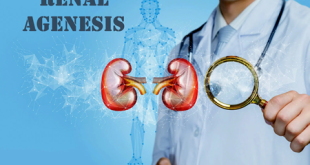Description
Kabuki syndrome is a rare, multisystem disorder characterized by multiple abnormalities including distinctive facial features, growth delays, varying degrees of intellectual disability, skeletal abnormalities, and short stature. A wide variety of additional symptoms affecting multiple different organ systems can potentially occur. The specific symptoms associated with Kabuki syndrome can vary greatly from one person to another.
History
Kabuki syndrome was first reported in the medical literature in 1981 by Japanese physicians. The disorder was originally called Kabuki-makeup syndrome because the facial features of many affected children resembled the makeup used by actors in kabuki, a form of Japanese theater. The term “makeup” has since been dropped and the preferred term for the disorder is Kabuki syndrome.
Causes of Kabuki Syndrome
- Kabuki syndrome is a genetic condition that may be caused by a mutation in the KMT2D gene (in up to 80% of cases) or the KDM6A gene.
- The KMT2D gene gives the body instructions to make an enzyme called lysine-specific methyltransferase 2D, which is present in many parts of the body. This enzyme modifies proteins called histones, which attach to DNA and give chromosomes their shape.
- By adding a molecule called a methyl group to histones (a process called methylation), the enzyme helps to control the activity of certain genes. It appears to activate certain genes that are important for development.
- The KDM6A gene gives the body instructions to make an enzyme called lysine-specific demethylase 6A. This enzyme helps to remove methyl groups from certain histones. Like lysine-specific methyltransferase 2D, this enzyme also helps to control the activity of certain genes. Research suggests that the two enzymes work together.
- Mutations in either of these genes result in the absence of the related enzyme, which disrupts histone methylation and impairs the activation of certain genes needed for normal development.
Risk factors
- A positive family history of Kabuki Syndrome is the only known risk factor for the condition
- It is important to note that having a risk factor does not mean that one will get the condition. A risk factor increases one’s chances of getting a condition compared to an individual without the risk factors. Some risk factors are more important than others.
- Also, not having a risk factor does not mean that an individual will not get the condition. It is always important to discuss the effect of risk factors with your healthcare provider.
Clinical Signs and Symptoms
The symptoms and features of Kabuki syndrome can vary widely from child to child. No child will have all of the symptoms.
- Distinctive facial features, including arched eyebrows, elongated and wide-set eyes, thick eyelashes, flat nasal tip, and large ears
- Bone abnormalities including short fingers (especially the fifth finger, irregularly shaped vertebrae, and mild spina bifida or scoliosis
- Poor muscle tone (hypotonia)
- Very flexible joints
- Misaligned eyes (strabismus)
- Feeding problems
- Frequent infections
- Hearing problems or hearing loss
- Congenital heart defects, including coarctation of the aorta, ventricular septal defect, and atrial septal defect
- Endocrine problems, such as hypoglycemia (low blood sugar), growth hormone deficiency, hypothyroidism or diabetes
- Kidney and urinary tract problems
- Smallmouth or jaw, or cleft or high arched palate
- Dental problems, such as missing teeth, unusually shaped teeth or misaligned teeth
- Early breast development or early puberty in girls
- Seizures
- Diarrhea or constipation
Complications of Kabuki Syndrome
Children with Kabuki syndrome can have other medical concerns like:
- Heart problems
- Urinary tract problems
- Frequent ear infections
- Hearing loss
- Problems with their immune systems
- Epilepsy
- Digestion problems.
Diagnosis and Test
Currently, there are no established consensus diagnostic criteria for KS. Traditionally, five cardinal manifestations have been defined:
- A ‘peculiar face’: eversion of the lower lateral eyelid, arched long eyebrows with the lateral one-third dispersed or sparse, a depressed nasal tip, and prominent ears; present in all patients.
- Skeletal anomalies: deformed spinal column with or without sagittal cleft vertebrae and brachydactyly.
- Dermatoglyphic abnormalities: such as the absence of the digital triradius ‘c’ and ‘d’ and the presence of interdigital triradii, as well as hypothenar and interdigital ulnar loop patterns and fingertip pads on all fingers.
- Mild to moderate mental retardation.
- Postnatal growth deficiency: born with normal growth parameters, but fail to thrive during infancy and show postnatal growth retardation because of feeding problems caused by poorly coordinated sucking and swallowing, as well as gastroesophageal reflux in some patients.
- Less frequent findings include visceral abnormalities, premature breast development in girls, and susceptibility to frequent infections.
Genetic test
A geneticist usually makes the diagnosis based on the child having the distinctive facial features and other signs suggestive of Kabuki syndrome. Genetic testing of the KMT2D gene can be used to confirm the diagnosis.
Treatment and Medications
Treatment for Kabuki syndrome depends on the symptoms and needs of the child. There are a lot of things that can be done to ensure your child is in good health if they have Kabuki syndrome, and to help them reach their full potential.
Healthcare professionals that are likely to be involved in your child’s care include a pediatrician, geneticist, and other specialists depending on the problems your child experiences. Most children will require the input of speech therapists, physiotherapists, and other allied health professionals.
How can Kabuki Syndrome be prevented?
- Currently, there are no specific methods or guidelines to prevent Kabuki Syndrome, since it is a genetic condition
- Genetic testing of the expecting parents (and related family members) and prenatal diagnosis (molecular testing of the fetus during pregnancy) may help in understanding the risks better during pregnancy
- If there is a family history of the condition, then genetic counseling will help assess risks, before planning for a child
- Active research is currently being performed to explore the possibilities for treatment and prevention of inherited and acquired genetic disorders such as Kabuki Syndrome
- Regular medical screening at periodic intervals with tests and physical examinations are mandatory
 Diseases Treatments Dictionary This is complete solution to read all diseases treatments Which covers Prevention, Causes, Symptoms, Medical Terms, Drugs, Prescription, Natural Remedies with cures and Treatments. Most of the common diseases were listed in names, split with categories.
Diseases Treatments Dictionary This is complete solution to read all diseases treatments Which covers Prevention, Causes, Symptoms, Medical Terms, Drugs, Prescription, Natural Remedies with cures and Treatments. Most of the common diseases were listed in names, split with categories.







